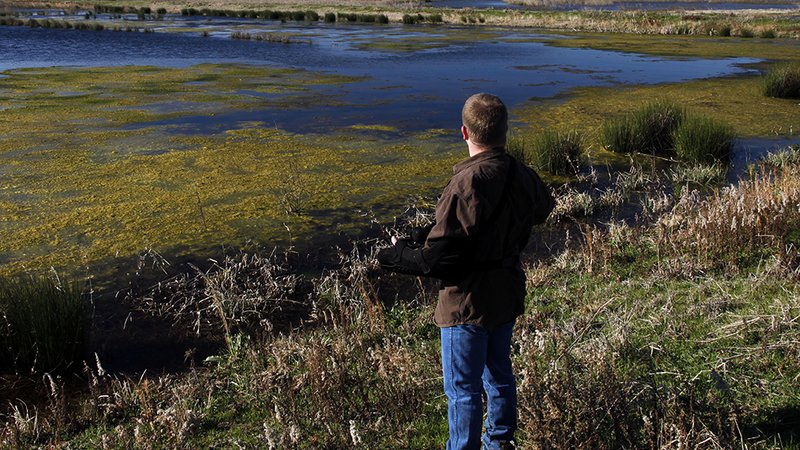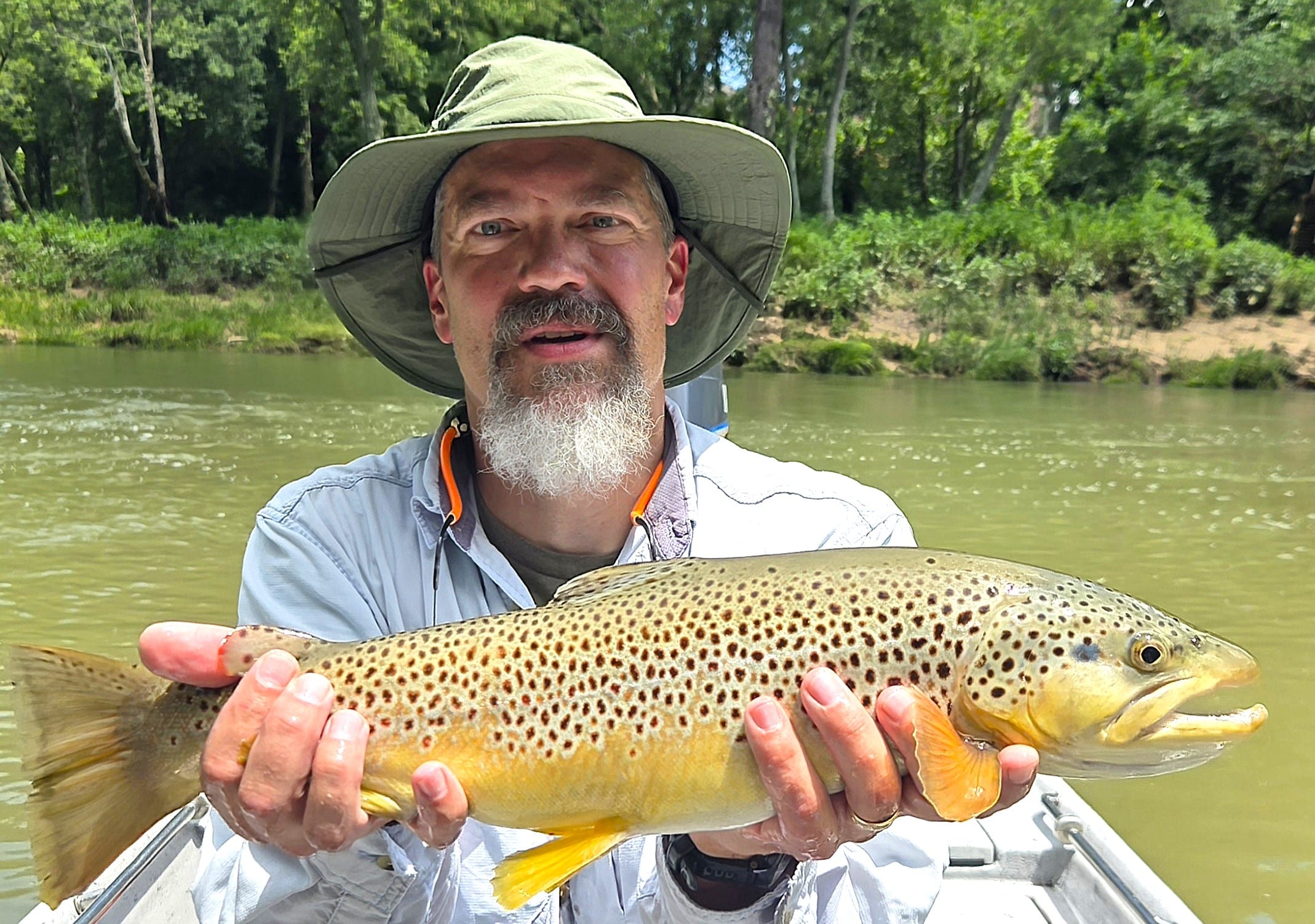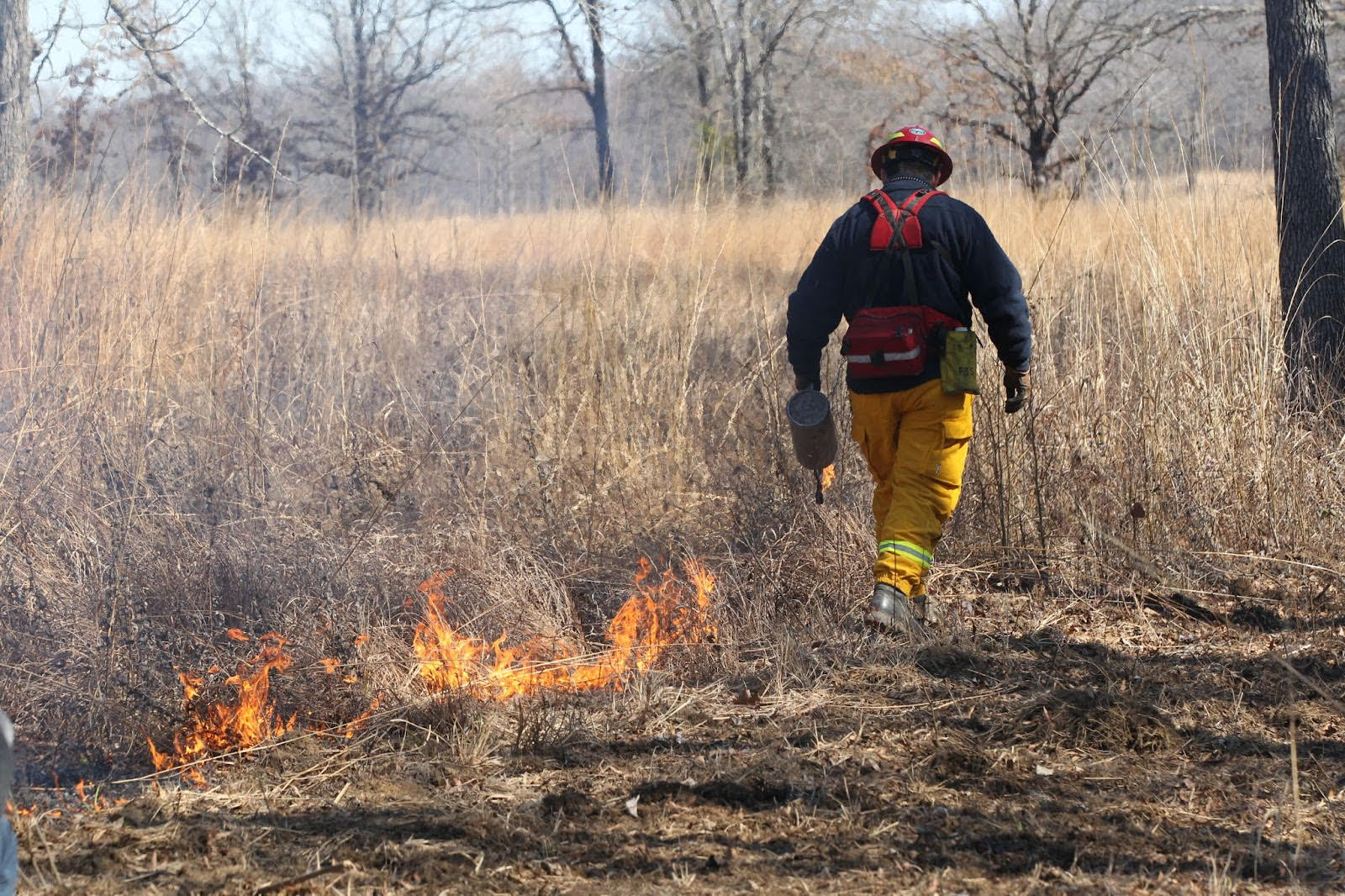Partnership Nearly Triples Public Waterfowl Hunting and Bird-Watching Area in Northwest Arkansas
ON 07-26-2017

July 26, 2017
Randy Zellers
Assistant Chief of Communications
Thanks to a partnership with the Trust for Public Land and Federal Aid in Wildlife Restoration grants, the Arkansas Game and Fish Commission has completed the purchase of new land surrounding Frog Bayou Wildlife Management Area in Crawford County, nearly tripling the size of this popular waterfowl-hunting and wildlife-viewing destination. The final closing of the purchase took place June 17, 2017.
The purchase of 1,390 acres adjacent to Frog Bayou WMA has been pursued by the AGFC for many years. The property does not drain well, making it too difficult and unpredictable to farm consistently. However its natural hydrology makes it ideal for the restoration of high-quality wildlife habitat, particularly moist-soil habitats for waterfowl and other migrating birds.
“Frog Bayou is one of the few public duck hunting areas in the west-central to northwest part of the state, so it has been extremely popular since its establishment,” said Luke Naylor, AGFC waterfowl program coordinator. “Expanding it has been a high priority, but many complications with multiple ownerships surrounding the property had made it difficult to pursue until recently.”
The AGFC worked with The Trust for Public Land to make the purchase possible and acquire the property for the public to enjoy. The Trust for Public Land facilitated adding the property to the WMA by securing a purchase agreement with the landowner, acquiring the property and conveying to AGFC as grant funding became available. This enabled the AGFC to go through the proper channels to secure Federal Aid in Wildlife Restoration funds. The total purchase price of the property was $4.54 million, 75 percent of which was brought in through Federal Aid in Wildlife Restoration funds.
“Those funds are brought in through excise taxes on sporting goods and firearms purchases,” said Matt Warriner, AGFC assistant chief of wildlife management. “This is exactly how the Federal Aid in Wildlife Restoration Act was designed to be used 80 years ago. The people who use the resource help pay to protect it and establish new public lands to pursue their passion through their equipment purchases. As a result, the wildlife benefits from increased habitat, and everyone who wishes to use the property benefits from increased access.”
Naylor says the area not only offers excellent waterfowl-hunting possibilities, but for years many local bird-watching enthusiasts have been making use of Frog Bayou WMA for their passion as well.
“A lot of people are driving from Fayetteville to the WMA,” Naylor said. “The WMA’s managers consistently see many students who waterfowl hunt there in the morning and are still able to make it to afternoon classes. Birding groups also make day-trips out there to look for wetland birds and Neotropical migrant birds in spring and fall.”
Stacey Shankle, senior project manager for The Trust for Public Land, says the Frog Bayou expansion is exactly the sort of project that his organization looks for to help improve public access to the outdoors.
“It really takes partnerships to make these sorts of positive impacts for the public at this scale,” Shankle said. “We are thrilled to have been able to work with AGFC on such an important and lasting project that will so significantly expand access to the outdoors for people in the area and for generations to come.”
Jason Jackson, AGFC wetlands program coordinator, says hunters and other outdoors enthusiasts using the area will likely see some changes in its management in the next few years, as the area is restored and managed to the best of its potential for wildlife and public use.
“Our goal is to add as much water to this area as possible through managed habitats,” Jackson said. “What a person sees out there this year and the next may be devoted to moist-soil units in future management plans.”
Naylor says improvements to the property will be for the best benefit of the wildlife and the public using the area to hunt or observe wildlife.
“We will definitely have a waterfowl rest area or two on the property to help keep waterfowl on this publicly accessible area,” Naylor said. “We also need to have a year or two to plan where to focus on certain habitat types to match what the landscape offers and the wildlife needs. We hope to also have wildlife-viewing trails available to the public in key areas to maximize the benefit for all the people who use the area throughout the year.”
Recent News

Arkansas Wildlife Weekly Fishing Report
Jul. 3, 2025
Subscribe to Our Weekly Newsletter E-mails
Don’t miss another issue. Sign up now to receive the AGFC Wildlife Weekly Newsletter in your mailbox every Wednesday afternoon (Waterfowl Reports are published weekly during waterfowl season and periodically outside the season). Fishing Reports arrive on Thursdays. Fill in the following fields and hit submit. Thanks, and welcome!

